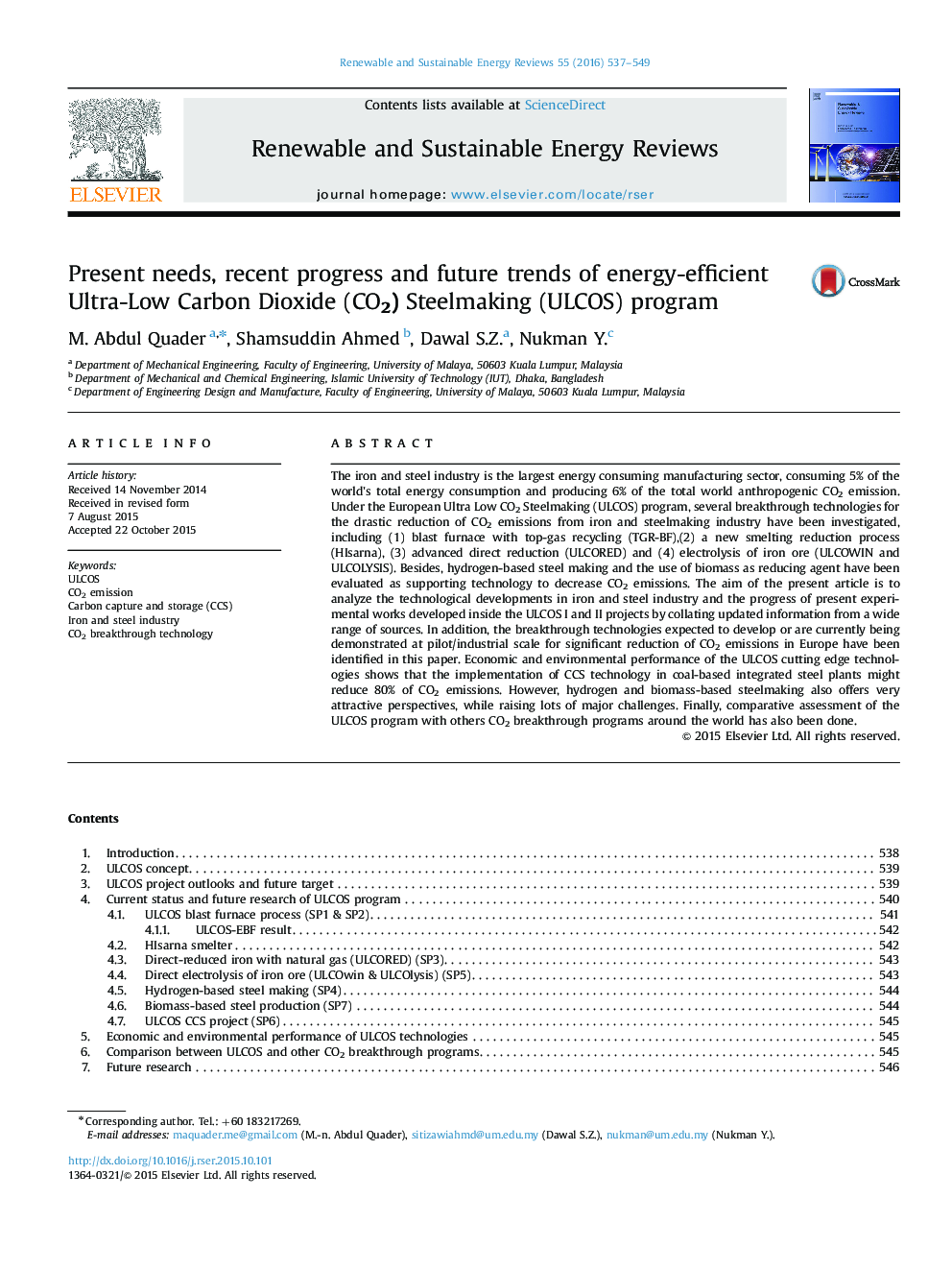| Article ID | Journal | Published Year | Pages | File Type |
|---|---|---|---|---|
| 8115282 | Renewable and Sustainable Energy Reviews | 2016 | 13 Pages |
Abstract
The iron and steel industry is the largest energy consuming manufacturing sector, consuming 5% of the world׳s total energy consumption and producing 6% of the total world anthropogenic CO2 emission. Under the European Ultra Low CO2 Steelmaking (ULCOS) program, several breakthrough technologies for the drastic reduction of CO2 emissions from iron and steelmaking industry have been investigated, including (1) blast furnace with top-gas recycling (TGR-BF),(2) a new smelting reduction process (HIsarna), (3) advanced direct reduction (ULCORED) and (4) electrolysis of iron ore (ULCOWIN and ULCOLYSIS). Besides, hydrogen-based steel making and the use of biomass as reducing agent have been evaluated as supporting technology to decrease CO2 emissions. The aim of the present article is to analyze the technological developments in iron and steel industry and the progress of present experimental works developed inside the ULCOS I and II projects by collating updated information from a wide range of sources. In addition, the breakthrough technologies expected to develop or are currently being demonstrated at pilot/industrial scale for significant reduction of CO2 emissions in Europe have been identified in this paper. Economic and environmental performance of the ULCOS cutting edge technologies shows that the implementation of CCS technology in coal-based integrated steel plants might reduce 80% of CO2 emissions. However, hydrogen and biomass-based steelmaking also offers very attractive perspectives, while raising lots of major challenges. Finally, comparative assessment of the ULCOS program with others CO2 breakthrough programs around the world has also been done.
Related Topics
Physical Sciences and Engineering
Energy
Renewable Energy, Sustainability and the Environment
Authors
M. Abdul Quader, Shamsuddin Ahmed, Dawal S.Z., Nukman Y.,
